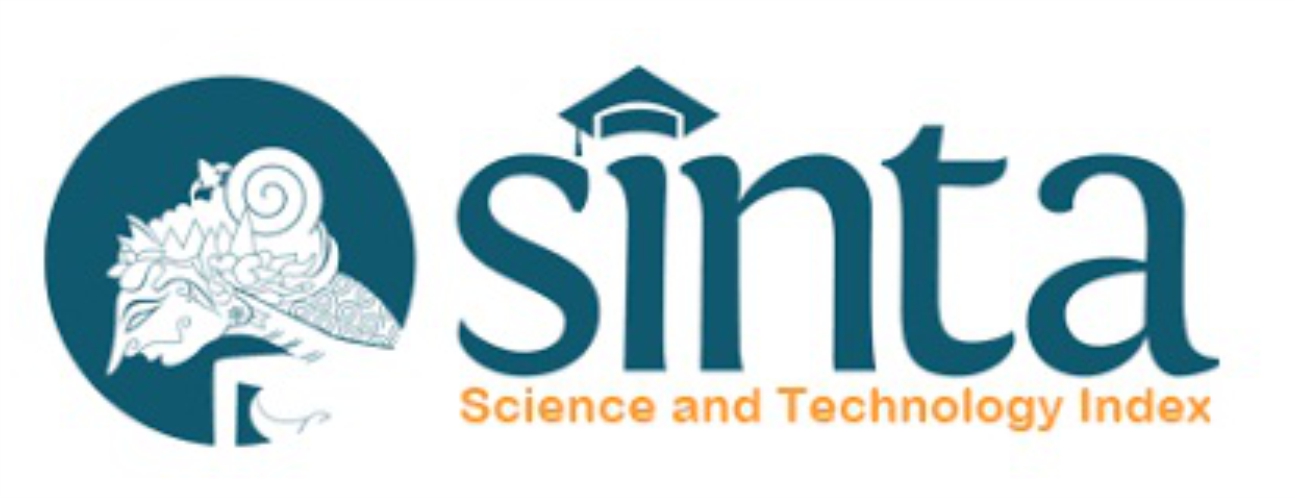EVIDENCE BASED KURKUMIN DARI TANAMAN KUNYIT (Curcuma longa) SEBAGAI TERAPI KANKER PADA PENGOBATAN MODERN
Abstract
Kurkumin (diferuloylmethane (C21H20O6) merupakan komponen berwarna kuning–orange yang terkandung dalam tanaman Curcuma longa. Secara tradisional masyarakat Indonesia memanfatkan bagian rimpang tanaman tersebut sebagai salah satu komponen bumbu masakkan sehari-hari dan sebagai komponen jamu dari berbagai kondisi dan penyakit seperti panas, hepatitis, jerawat, infekasi bakteri, inflamasi, scabies dll. Studi in vivo dan in vitro menunjukkan bahwa kurkumin mempunyai berbagai aktivitas farmakologis antara lain antiinflamasi, antiviral, antibakteri, antifungal,antikanker, antioksidan, antidiabetes mellitus, antirheumatoid arthritis. Sedangkan studi klinik juga telah banyak dilakukan diantaranya pada kanker pancreas, kanker kolon, kanker payudara, dan multiple myeloma. Pada makalah ini penulis akan membahas tentang etnomedisin kunyit (Curcuma longa), studi pre-klinik baik secara in vitro maupun in vivo, studi klinik pada pasien dan mekanisme kerja senyawa kurkumin sebagai agen kemopreventif dan kemoterapi penyakit kanker.
Kata Kunci :Kurkumin. Curcuma longa, antikanker, evidence based
Full Text:
PDFReferences
Akpolat, M., Kanter, M., & Uzal, M. C. (2009). Protective effects of kurkumin against gamma radiation-induced ileal mucosal damage. Archives of Toxicology, 83, 609–617
Akram M, Uddin S, Ahmed A, Usmanghani K, Hannan A, Mohiuddin E, Asif M, (2010), Curcuma Longa and kurkumin, a review article,.Rom.J.Biol-Plant Biol Volume 55, No.2, P 65-70
Bayet-Robert, M., Kwiatkowski, F., Leheurteur, M., et al. (2010). Phase I dose escalation trial of docetaxel plus kurkumin in patients with advanced and metastatic breast cancer. Cancer Biology& Therapy, 9, 8–14.
Braumann, C., Guenther, N., Loeffler, L. M, & Dubiel, W. (2009). Liver metastases after colonic carcinoma—palliative chemotherapy plus kurkumin. International Journal of Colorectal Disease,24, 859–860.
Cekmen, M., Ilbey, YO., Ozbek, E, et al. (2009). Kurkumin prevents oxidative renal damage induced by acetaminophen in rats. Food and Chemical Toxicology: An International Journal Published for the British Industrial Biological Research Association, 47, 1480–1484.
Cheng, A. L., Hsu, C. H., Lin, J. K., et al. (2001). Phase I clinical trial of kurkumin, a chemopreventive agent, in patients with high-risk or pre-malignant lesions. Anticancer Research, 21,2895–2900.
Dhillon, N., Aggarwal, B. B., Newman, R. A., et al. (2008). Phase II trial of kurkumin in patients with advanced pancreatic cancer. Clinical cancer research: An official journal of the American Association for Cancer Research, 14, 4491–4499.
Duvoix A, Blasius R, Delhalle S, Schnekenburger M, Morceau F, Henry E, Dicato M, Diederich M. (2005), Chemopreventive and therapeutic effect of kurkumin. Science Direct, Cancer Letter. P 181-190
Elwood, P. C., Gallagher, A. M., Duthie, G. G., et. al. (2009). Aspirin, salicylates, and cancer. Lancet, 373, 1301–1309.
Epelbaum, R., Schaffer, M., Vizel, B., et al. (2010). Phase II study of kurkumin and gemcitabine in patients with advanced pancreatic cancer. Nutrition and Cancer, 8, 1137–1141.
Fryer, R. A., Galustian, C., & Dalgelish, A. G. (2009). Recent advances and developments in treatment strategies against pancreatic cancer. Curr Clinical Pharmacology, 4, 102–112.
Garcea, G., Berry, D. P., Jones, D. J, et al. (2005). Consumption of putative chemopreventive agent kurkumin levels in the colorectum and pharmacodynamic consequences. Cancer Epidemiology, Biomarkers & Prevention: A publication of the American Association for Cancer Research,cosponsored by the American Society of Preventive Oncology, 14, 120–125.
Goel, A., Boland, C. R., & Chauhan, D. P. (2001). Specific inhibition of cyclooxygenase-2 (COX-2) expression by dietary kurkumin in HT-29 human colon cancer cells. Cancer Letters, 172,111–118.
Han S.S, Keum S.Y, Seo J.H, Surh J.Y, (2002),Kurkumin supresses Activation of NF-kB and AP-1 Induce by Phorbol Ester in Cultured Human Promyeloccytic Leukemia Cells, Journal of Biochemistry and Molecular Biology, Vol.35, No 3, pp.337-342
Jemal A, Bray F, Center MM, Ferlay J, Ward E, Forman D. 2011. Global cancer statistics. CA Cancer J Clin. Mar –April Vol 2 No 61 hal 69-90
Jagetia, G. C. (2007). Radioprotection and radiosensitization by kurkumin. Advances in experimental Medicine and Biology, 595, 301–320.
Joe, B., & Lokesh, B. R. (1994). Role of capsaicin, kurkumin and dietary n-3 fatty acids in lowering generation of reactive oxygen species in rat peritoneal macrophages. Biochimica et Biophysica Acta, 1224, 255–263.
Kang, H. J., Lee, S. H., Price, J. E, et. al. (2009). Kurkumin suppresses the paclitaxel-induced nuclear factor-kappaB in breast cancer cells and potentiates the growth inhibitory effect of paclitaxel in a breast cancer
Kawamori, T., Lubet, R., Steele, V. E., et al. (1999). Chemopreventive effect of kurkumin, a naturally occurring anti-inflammatory agent, during the promotion/progression stages of colon cancer. Cancer Research, 59, 597–601.
Kunwar, A., Sandur, S. K., Krishna, M., et al. (2009). Kurkumin mediates time and concentration dependent regulation of redox homeostasis leading to cytotoxicity in macrophage cells. European Journal of Pharmacology, 611, 8–16.
Lev-Ari, S., Lichtenberg, D., & Arber, N. (2008). Compositions for treatment of cancer and inflammation. Recent Patents on Anticancer Drug Discovery, 3, 55–62.
Li qiang H, Jin JL, Wu F, Li yX, You SJ,Cao HZ, Li D, Xu P.Y. (2012). Effect of Kurkumin on Proliferation, Cell cycle and caspase and MCF-7 cells, African Journal of Pharmacy and Pharmacology Vol 6(12).PP.864-870
Lin Li C dan Lin Kun j, (2008), kurkumin : a Potential Cancer Chemopreventif Agent Through Supressing NF-kB signaling, Journal of Cancer Molecules 4(1), p 11-16
Lin, S. S., Lai, K. C., Hsu, S. C, et al. (2009). Kurkumin inhibits the migration and invasion of human A549 lung cancer cells through the inhibition of matrix metalloproteinase-2 and -9 .
López-Lázaro, M. (2008). Anticancer and carcinogenic properties of kurkumin: Considerations for its clinical development as a cancer chemopreventive and chemotherapeutic agent. Molecular Nutrition & Food Research, 52(Suppl..1), S103–S127.
Mahmoud, N. N., Carothers, A. M., Grunberger, D., et al. (2000). Plant phenolics decrease intestinal tumors in an animal model of familial adenomatous polyposis. Carcinogenesis, 21, 921–927.
Nahar L, Sarker D.S, (2007), Phytochemistry of The Genus Curcuma dalam Ravindran, P.N., Babu N.K, Sivaraman K, Turmeric, The Genus Curcuma, CRC Press hal 71-101
Park, J., Ayyappan, V., Bae, E. K., et al. (2008). Kurkumin in combination with bortezomib synergistically induced apoptosis in human multiple myeloma U266 cells. Molecular Oncology, 2, 317–326.
Plummer, S. M., & Holloway, K. A., (1999). Manson MM, et al. Inhibition of cyclo-oxygenase 2 expression in colon cells by the chemopreventive agent kurkumin involves inhibition of NFkappaB activation via the NIK/IKK signaling
Reddy, S., Rishi, A. K., Xu, H., et al. (2006). Mechanisms of kurkumin- and EGF-receptor related protein (ERRP)-dependent growth inhibition of colon cancer cells. Nutrition and Cancer, 55,185–194.
Siegel R, Naishadham D, Jemal A. 2012.Cancer Statistic. CA: A Cancer Journal for Clinicians Volume 62 Nomer 1 hal 10-29
Samaha, H. S., Kelloff, G. J., Steele, V., et al. (1997). Modulation of apoptosis by sulindac, kurkumin, phenylethyl-3-methylcaffeate, and 6-phenylhexyl isothiocyanate: Apoptotic index as a biomarker in colon cancer chemoprevention and promotion. Cancer Research, 57, 1301–1305.
Sela B.G dan Schaffer, (2011), An Evidence-Based Perspective of Curcuma Longa (Turmeric) For Cancer Patient, Spinger Science. P 225-243
Sethi G, Sung and Aggarwal B.B., (2009) The Role of Kurkumin in Modern Medicine. Herbal drug to modern Medicine. Springer. P 114-121
Shankar, T., Shantha, N. V., Ramesh, H. P., et al. (1980). Toxicity studies on turmeric (Curcuma longa): Acute toxicity studies in rats, guinea pigs and monkeys. Indian Journal of Experimental Biology, 18, 73–75.
Sharma, R. A., Euden, S. A., Platton, S. L., et al. (2004). Phase I clinical trial of oral kurkumin: Biomarkers of systemic activity and compliance. Clinical cancer research: An official journal of the American Association for Cancer Research, 10, 6847–6854.
Sung, B., Kunnumakkara, A. B., Sethi, G., et al. (2009). Kurkumin circumvents chemoresistance in vitro and potentiates the effect of thalidomide and bortezomib against human multiple myeloma in nude mice model. Molecular Cancer Therapeutics, 8, 959–970.
Tharakan, S. T., Inamoto, T., Sung, B., et al. (2010). Kurkumin potentiates the antitumor effects of gemcitabine in an orthotopic model of human bladder cancer through suppression of proliferative and angiogenic biomarkers. Biochemical Pharmacology, 79, 218–228.
Tjindarbumi D, Mangunkusumo R. 2002. Cancer in Indonesia, present and future. Jpn J Clin Oncol. Mar 31 hal 17-21
Vascular Endothelial Growth Factor (VEGF). Cancer Letters, 285, 127–133.
WHO 2011, Cancer, World Health Organization, Switzerland. 2011. http://www.who.int/mediacentre/factsheet s/fs297/e
DOI: https://doi.org/10.18860/jip.v1i1.4178
Refbacks
- There are currently no refbacks.
Copyright (c) 2017 Roihatul Muti’ah
© 2023 Journal of Islamic Pharmacy













